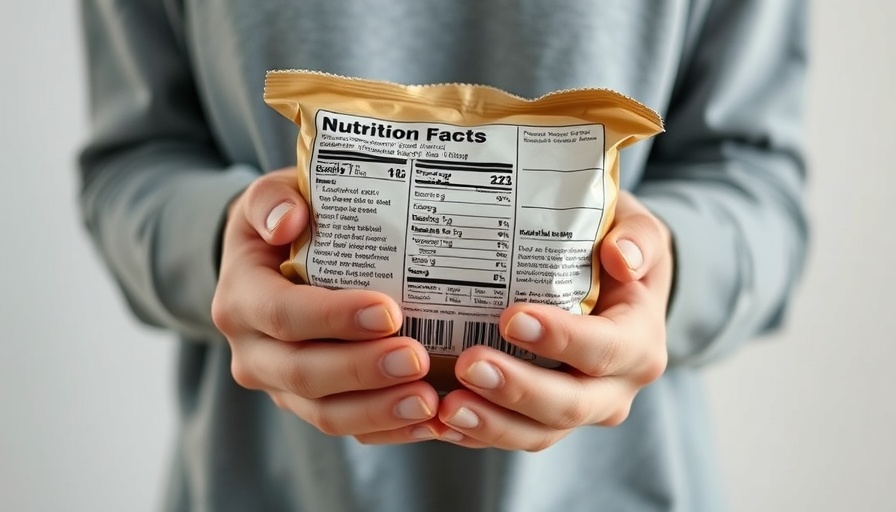
The Truth Behind the Label: How Food Marketing Tricks You (And What to Look For Instead)
If you've ever felt overwhelmed in the grocery store, staring at a product wondering what "natural flavors" actually means, you're not alone. Food labels have become masterclasses in marketing deception, with manufacturers finding increasingly clever ways to make their products appear healthier than they really are.
Let's pull back the curtain on what those colorful packages aren't telling you—and what you should actually look for when shopping.
The Serving Size Shell Game
Ever notice how that "only 120 calories" snack seems to disappear in two bites? There's a reason for that. Many manufacturers manipulate serving sizes to make nutrition facts appear more favorable.
A typical cereal box might list a serving as just 3/4 cup—when was the last time anyone actually measured their morning cereal? Most of us pour at least twice that amount.
What to look for instead: Always check the serving size first, then multiply the nutrition facts by how much you'll actually eat. For packaged foods like chips or cookies, count how many pieces constitute a "serving" according to the label, then count how many you typically eat in one sitting. The difference might shock you.
The "Health Halo" Effect
Terms like "natural," "made with real fruit," or "gluten-free" create what nutritionists call a "health halo"—the perception that a food is healthier than it actually is.
Dr. Marion Nestle, Professor Emerita of Nutrition at New York University, explains:
"Food companies use health claims to sell products. But claims about gluten-free cookies or all-natural sodas are marketing, not health advice. These products aren't necessarily any better nutritionally than their conventional counterparts."
What to look for instead: Ignore front-of-package claims and go straight to the ingredient list. Ingredients are listed in descending order by weight. If sugar (or one of its many aliases) appears in the first few ingredients, the product is likely more dessert than health food—regardless of how many "natural" claims are on the package.

The Sugar Disguise
Speaking of sugar, manufacturers have gotten extraordinarily creative at hiding it in plain sight. Sugar can appear under more than 60 different names on ingredient lists.
According to Dr. Robert Lustig, Professor of Pediatrics at the University of California, San Francisco:
"Added sugar is the tobacco of the 21st century. Food manufacturers know this, which is why they hide it behind terms like maltodextrin, dextrose, rice syrup, or fruit juice concentrate. They're all metabolized the same way, and they all cause the same metabolic dysfunction."
What to look for instead: Learn sugar's many disguises, which include anything ending in "-ose" (dextrose, fructose, maltose), syrups (corn syrup, rice syrup, maple syrup), concentrates (fruit juice concentrate), and honey. Remember that multiple types of sugar may appear throughout an ingredient list, effectively hiding the true total.
The Meaningless "Natural" Claim
The term "natural" appears on countless food packages, but here's the shocking truth: the FDA has no formal definition for this term when it comes to food labeling. Companies can essentially use "natural" however they want.
What to look for instead: Look beyond vague terminology and focus on specific attributes that matter to you. If animal welfare is important, look for certified humane or Animal Welfare Approved. If environmental concerns are key, look for USDA Organic or specific sustainability certifications.

The Fine Print of Fortification
Many processed foods boast they're "fortified with vitamins and minerals" or "good source of fiber." While technically true, these nutrients are often added artificially to compensate for what was lost during processing.
What to look for instead: Choose foods that are naturally nutrient-dense. Fresh or frozen fruits and vegetables, whole grains, and minimally processed proteins don't need to advertise their nutrition content—it's inherent to the food itself.
Final Thoughts
Food labels can be confusing by design. Companies have profit incentives to make their products seem healthier than they are. Your best defense is education—knowing what to look for and what to ignore.
The simplest approach? Spend most of your shopping time in the perimeter of the grocery store where fresh, whole foods typically reside. When you do buy packaged foods, flip the package over immediately and look at the ingredient list first, nutrition facts second, and marketing claims last (if at all).
Remember: the foods that are best for you rarely need a label touting their health benefits. An apple doesn't need to tell you it's "all-natural" or "fat-free"—its nutrition speaks for itself.
Further Learning Resources:
"Salt Sugar Fat: How the Food Giants Hooked Us" by Michael Moss - A revealing look at how the processed food industry designs products to maximize consumer appeal.
"Food Rules: An Eater's Manual" by Michael Pollan - Simple, practical guidelines for eating real food in a processed world.
"Food Politics: How the Food Industry Influences Nutrition and Health" by Marion Nestle - An in-depth exploration of how food companies influence what we eat.
 Add Row
Add Row  Add
Add 




 Add Row
Add Row  Add
Add 

Write A Comment